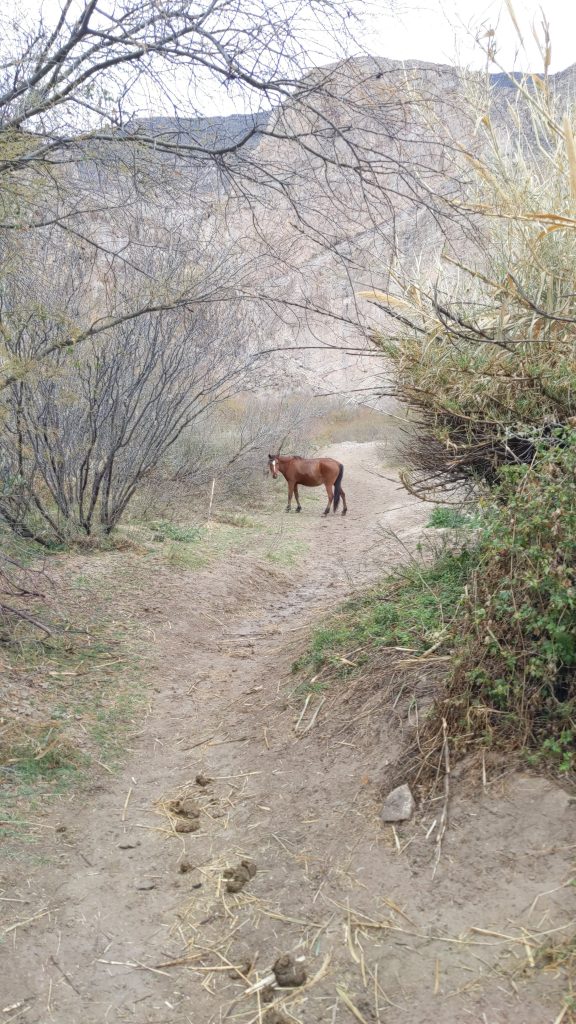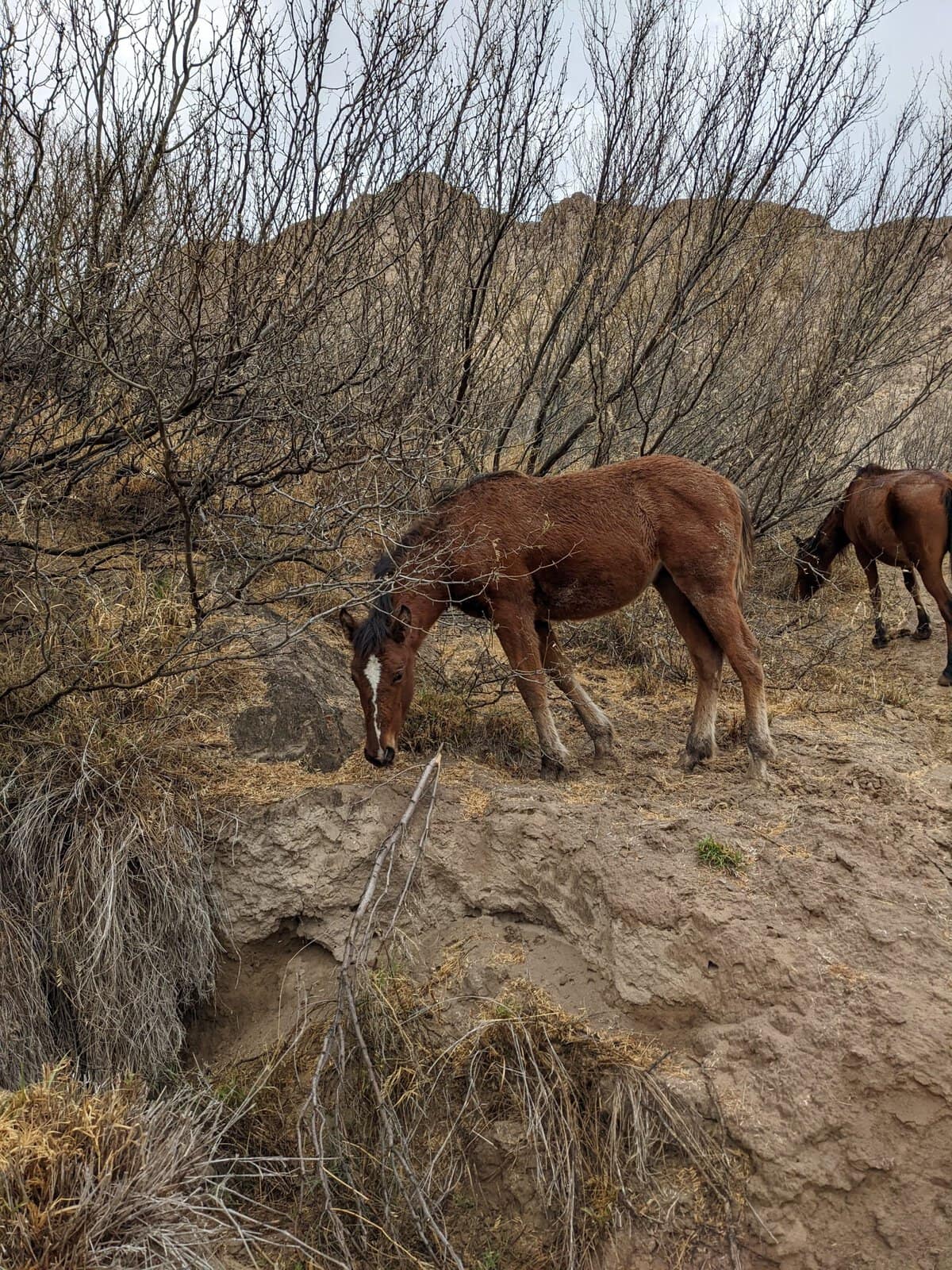You didn’t think we’d actually get through a page on Big Bend without talking about illegal border crossings, did you?
Picture this. You’re strolling along a trail by the Rio Grande – maybe Hot Springs Trail, maybe Boquillas Canyon or, if you’re a brave heart, Marufo Vega – and you run up on a scrawny bunch of horses happily grazing.
Mustangs! you think to your poor, stupid self. How iconically American! And you happily snap some pictures, all the while thinking how lucky you are to have stumbled upon these magnificent beauties.
Sound familiar? Because I did this exact thing on my first trip to the Rio Grande region of Big Bend National Park. I encountered these scrubby bandits on all of the above named trails and thoroughly enjoyed them…until I asked the park rangers about them.
“WILD” HORSES AREN’T SUPPOSED TO BE IN BIG BEND
What were they? Where did they come from? I was ready to drink up a rich history of Big Bend’s equines.
The reality was not nearly as romantic as I had imagined. The horses I had seen were livestock from Mexico, I was told. Some of them wander over the Rio Grande in search of greener fucking pastures and some of them are purposely herded across to fatten up. Both are illegal activities.

Boy was I glad I had not mentioned to the ranger that I initially believed them to be mustangs.
So here’s the skinny. Once upon a time, ranchers on both sides of the Rio Grande grazed livestock in this area. The river provides lush growth for grazing and the area is surprisingly green, especially considering the shitty soil.
But once Big Bend became a national park, the park had a responsibility “…to conserve the scenery and the natural and historic objects and the wild life therein and to provide for the enjoyment of the same in such manner and by such means as will leave them unimpaired for the enjoyment of future generations” under the Organic Act of 1916. Unfortunately, these scrubby horses cause massive environmental damage and are actively out of line with the Organic Act.
THE IMPACT OF HORSE GRAZING ON BIG BEND
Experts estimate there are generally at least 100 large animals within Big Bend grazing at a time. That may not sound like a lot, but they can have an outsized impact. These large animals erode soil as they move, creating a new network of trails called terracettes. This changes the soil conditions significantly and kills plants.
The park’s superintendent, Bob Krumenak, has said that the damage illegal grazing is doing is one of the most significant threats to the park’s natural resources. Gulp.
And it’s not as easy as you’d think to deter this behavior. The park has tried a frustrating number of things to put a stop to these shenanigans. Long story short – nothing has worked. Not fines, not auctioning off these fuckers, not simply returning them to their owners.
TOO LONG: DIDN’T READ;
if you see a horse at Big Bend, enjoy its beauty but don’t be fooled for one second by that sneaky fucker. This is no mustang, no wild Black Beauty – it’s livestock and it’s not supposed to be there. And definitely don’t make a fool of yourself by asking a ranger about “those wild mustangs by the river”.

